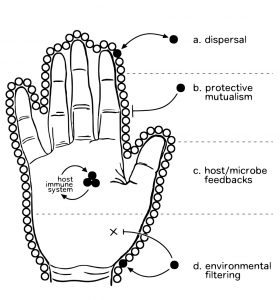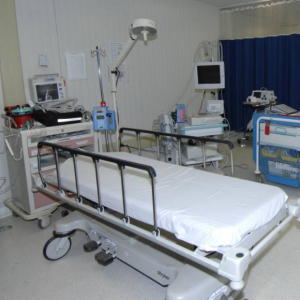Early-life microbial exposure has been recognized to have a crucial role in immune development. Exposure in the actual infant breathing zone (BZ), influenced by the resuspension of floor dust, however, is little explored. Two recently published papers tackle this issue by assessing infant exposure to biological particulate matter (fluorescent biological aerosol particles, FBAPs) and microbial …
Microbes indoors Building-related symptoms are linked to the in vitro toxicity of indoor dust and airborne microbial propagules in schools: A cross-sectional study – JT Salin – Environmental Research ($41.95) We examined whether the in vitro toxicity of indoor samples from school buildings was associated with work-related health symptoms (building-related symptoms, BRS). Administrators of the Helsinki …
Microbes in the house and office A survey of xerophilic Aspergillus from indoor environment, including descriptions of two new section Aspergillus species producing eurotium-like sexual states – Cobus M. Visagie – MycoKeys (OA) Xerophilic fungi grow at low water activity or low equilibrium relative humidity and are an important part of the indoor fungal …
(This post was written by Roo Vandegrift at the University of Oregon) I was recently asked to spearhead the writing of a review centered around the interaction between the concept of hygiene and our increasingly nuanced understanding of the human skin microbiome for the Biology and the Built Environment (BioBE) Center at the University of …
Microbes and money Dirty Money: A Matter of Bacterial Survival, Adherence, and Toxicity – Frank Vriesekoop – Microorganisms (OA) In this study we report the underlying reasons to why bacteria are present on banknotes and coins. (…) We treated the various currencies used in this study as microcosms, and the bacterial loading from human hands as …
Microbes in the air High throughput genomic sequencing of bioaerosols in broiler chicken production facilities – Kate M. O’Brien – Microbial Biotechnology (OA) Chronic inhalation exposure to agricultural dust promotes the development of chronic respiratory diseases among poultry workers. Poultry dust is composed of dander, chicken feed, litter bedding and microbes. However, the microbial composition …
Microbes of old Early evidence for travel with infectious diseases along the Silk Road: Intestinal parasites from 2000 year-old personal hygiene sticks in a latrine at Xuanquanzhi Relay Station in China — Hui-Yuan Yeh — Journal of Archaeological Science: Reports ($31.50) The Silk Road has often been blamed for the spread of infectious diseases in …
An open access article entitled “Evaluation of disinfection efficiency in pet’s hospital by using chlorine dioxide” was recently published in Sustainable Environment Research. In this study, the authors investigated the efficacy of chlorine dioxide in reducing the concentration of bacteria and fungi in bioaerosols in an animal hospital. Chlorine dioxide is an effective disinfectant commonly …
For the past couple of years, there has been a storm gathering on the horizon of indoor air quality monitoring. Nucleating around crowd-funding sites such as Kickstarter and Indiegogo, these devices seem to advect along roughly similar trajectories. The teams working on these projects have created a sort of high pressure system wafting high-quality industrial …
Microbiology of the Built Environment research these recent years have explored how humans are a source of microbes and microbial products indoors. To further study the effect of human occupancy on the biological aerosols of indoor space, our research group at Berkeley decided to move from observation studies to controlled experiments to isolate – and quantify – this …



